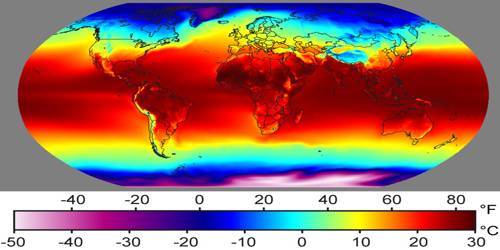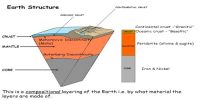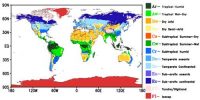Temperature at the Earth’s Surface
The interaction of insolation with the atmosphere and the earth’s surface creates heat which is measured in terms of temperature. While heat represents the molecular movement of particles comprising a substance, the temperature is the measurement in degrees of how hot (or cold) a thing (or a place) is.
Factors Controlling Temperature Distribution
The temperature of air at any place is influenced by
(i) the latitude of the place;
(ii) the altitude of the place;
(iii) distance from the sea, the air-mass circulation;
(iv) the presence of warm and cold ocean currents;
The latitude: The temperature of a place depends on the insolation received. It has been explained earlier that the insolation varies according to the latitude hence the temperature also varies accordingly.
The altitude: The atmosphere is indirectly heated by terrestrial radiation from below. Therefore, the places near the sea-level record higher temperature than the places situated at higher elevations. In other words, the/ temperature generally decreases with increasing height. The rate of decrease of temperature with height is termed as the normal lapse rate. It is 6.5°C per 1,000 m.
Distance from the sea: Another factor that influences the temperature is the location of a place with respect to the sea. Compared to land, the sea gets heated slowly and loses heat slowly. Land heats up and cools down quickly. Therefore, the variation in temperature over the sea is less compared to land. The places situated near the sea come under the moderating influence of the sea and land breezes which moderate the temperature.
Air-mass and Ocean currents: Like the land and sea breezes, the passage of air masses also affects the temperature. The places, which come under the influence of warm air-masses experience higher temperature and the places that come under the influence of cold air-masses experience low temperature.
















